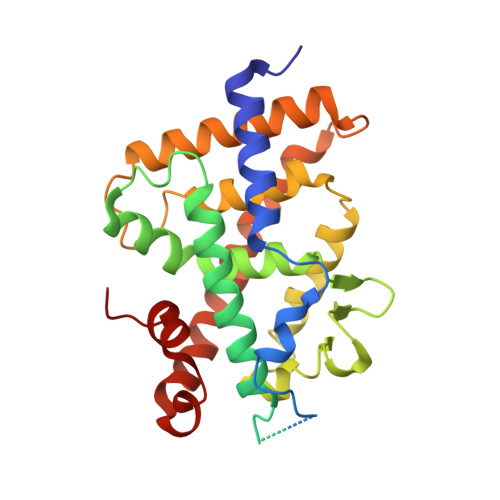Adaptability of the Vitamin D nuclear receptor to the synthetic ligand Gemini: remodelling the LBP with one side chain rotation
Ciesielski, F., Rochel, N., Moras, D.(2007) J Steroid Biochem Mol Biol 103: 235-242
- PubMed: 17218092
- DOI: https://doi.org/10.1016/j.jsbmb.2006.12.003
- Primary Citation of Related Structures:
2HC4, 2HCD - PubMed Abstract:
The crystal structure of the ligand binding domain (LBD) of the wild-type Vitamin D receptor (VDR) of zebrafish bound to Gemini, a synthetic agonist ligand with two identical side chains branching at carbon 20 reveals a ligand-dependent structural rearrangement of the ligand binding pocket (LBP). The rotation of a Leu side chain opens the access to a channel that can accommodate the second side chain of the ligand. The 25% increase of the LBP's volume does not alter the essential agonist features of VDR. The possibility to adapt the LBP to novel ligands with different chemistry and/or structure opens new perspectives in the design of more specifically targeted ligands.
Organizational Affiliation:
Département de Biologie et de Génomique Structurales, IGBMC, CNRS/INSERM Université Louis Pasteur, Parc d'innovation BP10142, 67404 Illkirch Cedex, France.
















